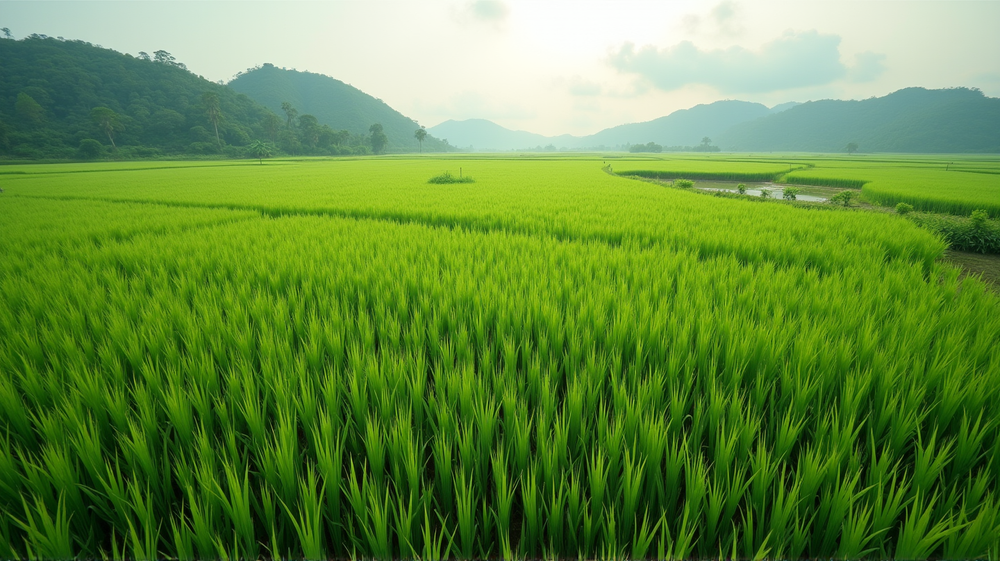Unlocking the Secrets of Rice Efficiency: Beyond Traditional Methods
In the verdant fields of the northwest Himalayan region, a revolutionary shift in rice cultivation is sowing the seeds of future sustainability. This comprehensive study, as published in Scientific Reports (2025), delves deep into the comparative performance of direct-seeded rice (DSR) against traditional transplanted rice, revealing astounding results.
A Paradigm Shift in Rice Cultivation
Traditional rice farming, while prevalent, bears the marks of inefficiency against modern challenges such as dwindling water resources and climate change impacts. Direct-seeded rice has emerged as a promising contender, exhibiting up to 25% higher water productivity and yields surpassing traditional counterparts. This progress isn’t just theoretical; it’s being realized in the temperate climes of Kashmir Valley where modern techniques and new irrigation methods like saturation and alternate wetting and drying showcase their potential.
The Science Behind the Growth
The comparative analysis highlighted in the study showed fascinating results. Direct-seeded rice produced more tillers and panicles and maintained lower spikelet sterility rates, ultimately translating to increased grain yields of between 6.69 to 7.8 t ha−1, outperforming transplanted rice. The study meticulously carried out over the temperate seasons accentuates that irrespective of irrigation methods, conventional flooding showed a noticeable decline in water productivity compared to modern approaches, according to Nature.
Water Productivity Redefined
In temperate regions where water conservation is crucial, DSR shines brightly. The research showcased how irrigation methods like saturation could conserve up to 25% more water compared to traditional flooding. The efficiency in water usage not only underpins a sustainable path forward but also aligns perfectly with global pressure to reduce agricultural water footprints.
Economic Viability and Environmental Sustainability
Economically speaking, direct-seeding trumped the traditional method with a return of 2.2 per rupee invested, whereas transplanted rice lagged at 1.48. This economic edge is compounded by environmental benefits. Traditional flood irrigation is notorious for methane emissions—a contributing factor to climate change, thereby offsetting DSR as an eco-friendlier choice.
Embracing Change for Future Gains
Implementing direct-seeded rice accompanied by innovative irrigation practices presents a dual benefit: combating water scarcity and reducing reliance on intensive labor while simultaneously boosting profitability and yields. This forward-thinking approach emphasizes that for rice production to stabilize in the face of escalating resource challenges, adopting scientific advancements in agricultural practices is no longer optional.
The horizon looks promising as researchers ever so cautiously herald DSR with modern irrigation as a sustainable and ecologically responsible pathway. With the backing of agricultural innovations and careful stewardship of resources, this study the proverbial ray of sunshine on a greener, more sustainable agricultural future.




